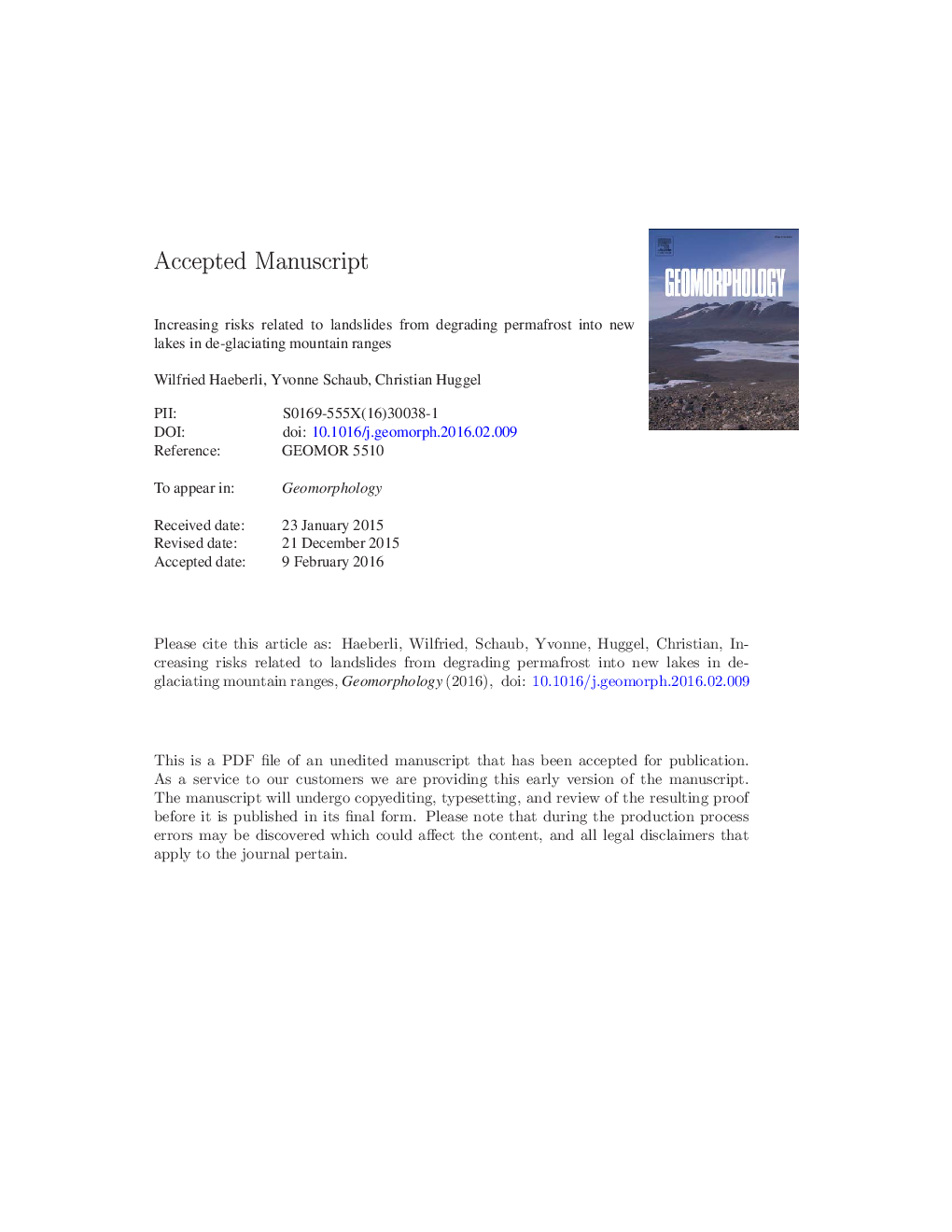| Article ID | Journal | Published Year | Pages | File Type |
|---|---|---|---|---|
| 5780729 | Geomorphology | 2017 | 60 Pages |
Abstract
Hot spots of future hazards from potential flood waves caused by large rock falls into new lakes can already now be recognized. To this end, integrated spatial information on glacier/permafrost evolution and lake formation can be used together with scenario-based models for rapid mass movements, impact waves and flood propagation. The resulting information must then be combined with exposure and vulnerability considerations related to settlements and infrastructure. This enables timely planning of risk reduction options. Such risk reduction options consist of two components: Mitigation of hazards, which in the present context are due to effects from climate change, and reduction in consequences, which result from societal conditions and changes. Hazard mitigation may include artificial lake drainage or lake-level lowering and flood retention, optimally in connection with multipurpose structures for hydropower production and/or irrigation. Reduction in damage potential (exposure, vulnerability) can be accomplished by installing early-warning systems, adapting spatial planning and/or by improving preparedness of local people and institutions.
Related Topics
Physical Sciences and Engineering
Earth and Planetary Sciences
Earth-Surface Processes
Authors
Wilfried Haeberli, Yvonne Schaub, Christian Huggel,
